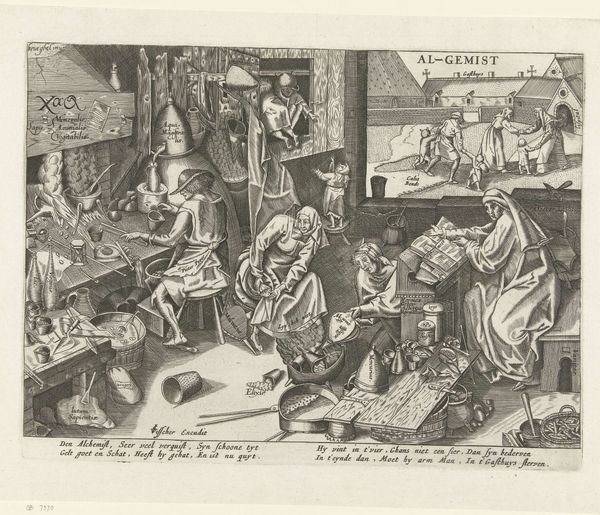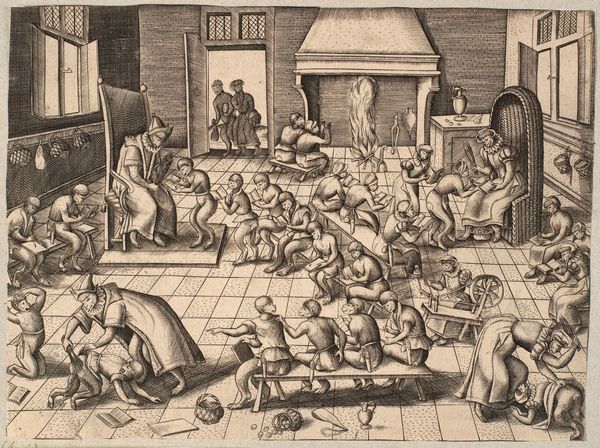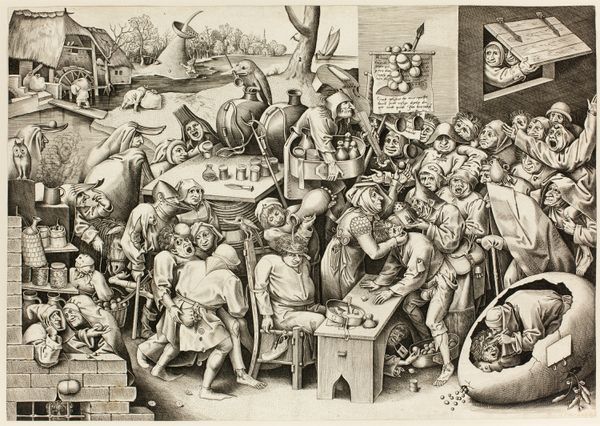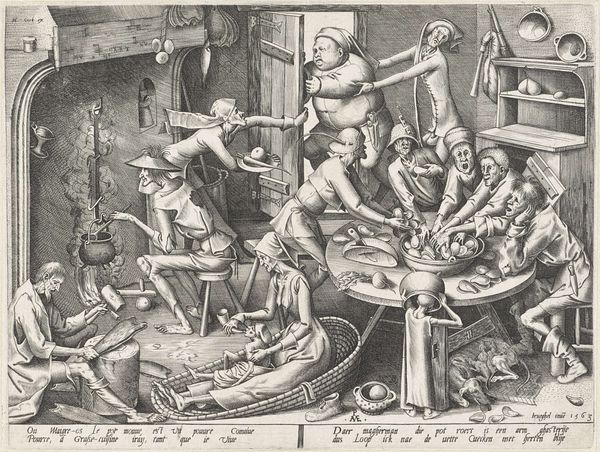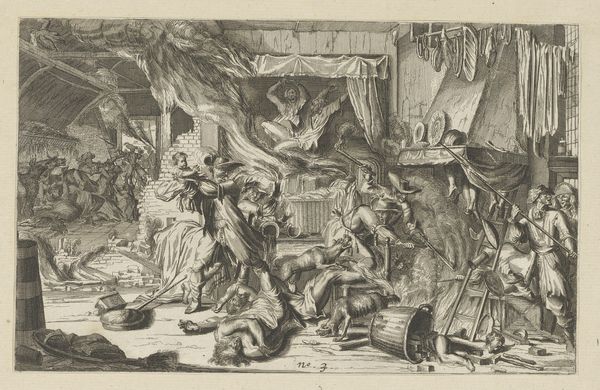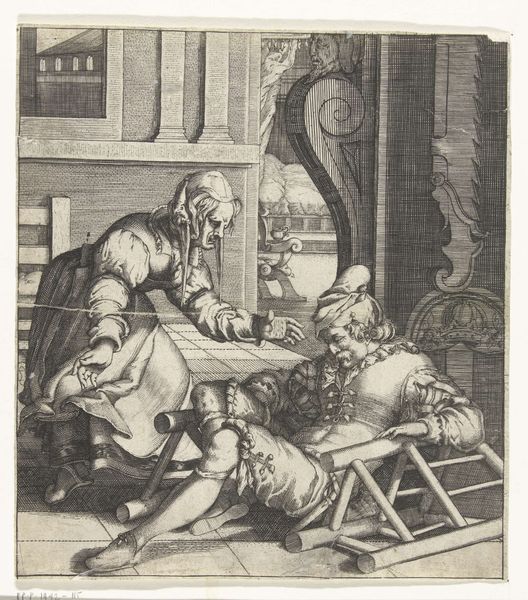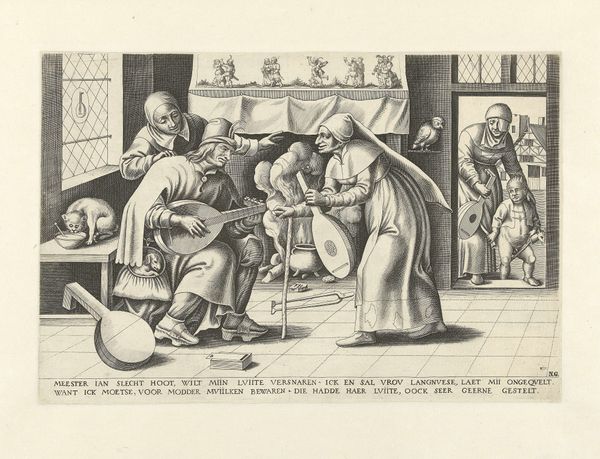
print, engraving
# print
#
mannerism
#
figuration
#
line
#
genre-painting
#
history-painting
#
academic-art
#
engraving
Dimensions: height 341 mm, width 454 mm
Copyright: Rijks Museum: Open Domain
Editor: Here we have Philips Galle's "Alchemist," an engraving from around 1556-1560. The density of the image is really striking – it's crammed with figures and objects. How do you interpret this work, especially considering the social context it comes from? Curator: It's fascinating, isn't it? Galle's "Alchemist" isn't just a genre scene; it’s a commentary on the socio-economic anxieties of the time. Alchemy, while ostensibly about transforming base metals into gold, becomes a metaphor for broader societal aspirations and deceptions. The chaotic, almost frantic activity within the alchemist's workshop can be seen as a critique of striving for wealth and status. The contrast with the exterior scene hints at what’s sacrificed in that pursuit. Don't you see the commentary on value systems being presented here? Editor: That's a really interesting point. So you're suggesting the alchemist’s activities could be mirroring, maybe even mocking, larger power structures at the time? Curator: Exactly! Consider the power dynamics inherent in early modern science. Alchemy was a secretive, often unregulated practice. The idea of transformation held allure, but also raised concerns about social mobility and potentially disrupting the established order. How might this image speak to fears surrounding unregulated knowledge and its potential to destabilize society? Editor: I guess it does feel quite subversive, questioning who holds knowledge and the legitimacy of their pursuits. Curator: Right. Think about how this challenges traditional hierarchies by showing the futility of attempting shortcuts to wealth and power. Also, consider what it says about labor. The intense focus indoors versus the familial interaction outdoors speaks to an imbalance and cost of this relentless, if misguided, pursuit. Editor: So, seeing it this way transforms what seems like a simple depiction of alchemy into a critique of early capitalist desires and patriarchal control? Curator: Precisely. And recognizing this enriches our understanding of the era’s cultural anxieties about power, class, and gender. Editor: I've definitely got a lot to think about, and a wider perspective on how art and social commentary can connect.
Comments
No comments
Be the first to comment and join the conversation on the ultimate creative platform.
